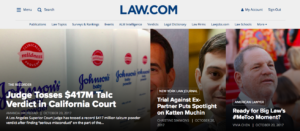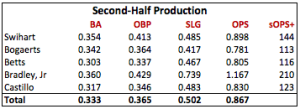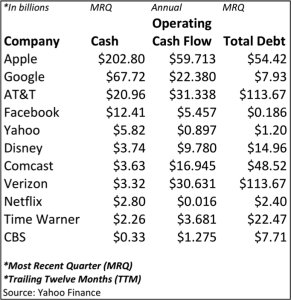For the past 18 months I’ve been treated to a masterclass in the news industry from some of the smartest people around. Thank you to Jim Friedlich, Ken Herts, Gordon Crovitz, Jason Klein, Rick Stein and all the industry leaders I met or spoke to.
From 2007 until 2015 I ran digital news and information businesses. I was exposed to print through my M&A experience and my time running Imaginova but for the most part I was a digital media guy. That sector has its own issues for sure with 85% of all new digital dollars going to just 2 media companies and the largest player in digital video seemingly not caring if they turn a profit. The issues facing “heritage media companies” as they are now known are well established. I won’t rehash them or how the industry got here. But as a newcomer to these companies and cultures I did see some things with fresh eyes.
Here’s a few of the things I learned in no particular order.
Tremendous Value Lies In Great But Trapped Content
The data, relationships and focused vertical knowledge inside the walls of heritage media companies are massive content assets. They need to be mined and applied to the right mix of new platforms, products and business models. Voting histories of city councils, image libraries, restaurant reviews all sit within boarded up gold mines because UI/ UX is not a core competency. Users want and need the service that this data can provide them, building a UX that gives it to them at the time and place they want it is next.
Sports Sections Are Always the Furthest Ahead
Somehow the knucklehead jock reporters figured out the interwebs before everyone else and its stayed that way. But if you look at the nature of sports fans’ relationships to teams and beat sports writers’ relationships to each other you see what gave them an edge. Sports fans have a passionate, interactive relationship with sports media unlike that consumers have with political, business or cultural coverage. They want to consume every ounce of coverage and every replay. Sports writers spend time with writers from other cities and other teams far more than do journalists from the metro desk, for example. From the start this gave them an edge on sharing best practices from across the country. Check any newspaper and the biggest social followings are always for the sports writers.
That’s why 10 years ago the biggest opportunities were for The Huffington Post and Business Insider that built personality and modern UI/UX into their political and business coverage from the start. In fact, natively digital sports media like Bleacher Report and SB Nation borrowed their aggregation model from print, simply doing online what Peter Gammons’ did for his Sunday baseball column in the Boston Globe.
There Are 2 Newspaper Industries; Know Which One You’re In
The New York Times, The Wall Street Journal and now The Washington Post are playing a different game than everyone else. They are addressing national or international markets and get the benefits of the scale for the markets in which they play. Other large metro newspapers can perhaps borrow some best practices and maybe some technology but should certainly not say, “hey, the Post is doing it, we should too.”
Leadership Matters
I have not met a single person in any company that did not honestly want their company to succeed digitally. For sure, some folks are still on auto pilot for a print paradigm that hasn’t existed in many years. There are clearly different levels of preparedness and myriad approaches to the challenges. What’s needed is for great leaders need to step up and get people to follow them into battle.
Invest in World Class Talent
Sell the mission of journalism, pay more than you should, do acqui-hires, etc. But, do what it takes to get world class talent into your company. “World Class” does not mean the best talent who worked at another newspaper, it means the best talent.
There are very talented people in these companies for sure but the skill set is uneven and too much load falls on the very best, pushing them out the door eventually. This change will be painful but necessary.
Some Big Swings are Needed
Large companies have notoriously fell victim to the innovator’s dilemma but the problem is acute in this industry. Where is the Hail Mary pass? Is anyone willing to make a “bet the company” play to save a business? Since it will likely take a couple to figure it out they need to happen frequently. Just doing what is working in another city is not the transformative change needed.
These risks need to be taken not just on the business and product side but by journalists as well. Many people are calling what we are in now the “Golden Age of Television” despite the fact that linear television business models are just as challenged as print. But when writers, directors and actors were given freedom to test new formats they responded with such amazing content that we are all glued to our screens to watch House of Cards, Breaking Bad or Game of Thrones. Someone at a metro newspaper has to step up and do things in a fundamentally different and better way. Create awesome content for people and they will be loyal customers.
The Competition is Not Who You Say it is, It’s Who Your Readers Say It is
Not much to add here. Stop using just the other newspapers in town and the radio station websites as your list of competition. Ten minutes with the right data will show you were your readers are getting information about their city and the world.
Obsess About Design and User Experience
You don’t have to have the best UX among other newspapers, you have to be better than all the natively digital sources for news and information. You readers experience many digital products every day on their phone, car, office desktop and tv. Does yours measure up to all of those?
Understanding Comparative Advantage is Critical
Markets are not all created equal. Each has industries, people, teams, companies or histories that make them unique in terms of the content they generate. Regional media companies need to discover where they have these advantages and build moats around them with additional investment in best-in-class coverage.
Revenue Forecasts Are Uniformly Unrealistic
Operators are not blind to the declines of print advertising and subscription revenue. To the contrary, most adopt nearly the same 5-7% annual decline forecast out for several years. However, the far more likely scenario is annual low single digit declines followed by a cliff of a 15%+ decline during the next ad recession. Are they planning their balance sheets accordingly?
For God’s Sake, Stop Calling it a Paywall
Would you say there is a paywall at the Mercedes dealer, McDonald’s, the movie theater or the grocery store? Consumers are used to paying for things they value, but a wall is an obstacle, a blocking mechanism. Consumers are not used to be being actively blocked from purchasing things they want. In short, the message matters.
Fake It Till You Make It Is Not a Strategy
Apologies but adding Online or Digital to your company name doesn’t change your business model any more than me changing my name to Mookie gives me a spot in the Sox lineup.
Build Defensible New Revenue Streams
Digital strategies of reselling reach extension or SEM don’t scale, have declining margins and will likely be automated away by Google and Facebook. They are not the answer. Print strategies built around “bonus days” are simply pulling accrual but not cash-based revenue into the present while being disingenuous to readers and forcing them to renew early.
Revenue growth has to come from real, defensible, high margin businesses that leverage a news brands’ own unique selling proposition, data and relationships. Those opportunities exist in the event space, commerce, digital subscriptions, and news-as-a-service. Most importantly though they exist in even bigger ideas that have not been thought of yet.
It’s Not Going Away, But it Sure as Hell Has to Change
Two of the world’s most effective communicators today are the street artist Banksy and Pope Francis. One uses an ancient communication tool to tell a modern story, the other uses a modern communication tool to tell an ancient story. A great medium and or a great story can each adapt to the times.
 Law.com does not use revolutionary technology to accomplish its goals. It uses the basic building blocks of the web to bring a fresh and modern experience to legal professionals – the kind of experience they have come to expect in their personal technology use. It’s fast, it’s clean and it just works. This new platform gives each of our readers the brands and news they need and expect. It exposes them to other content they value in a way that makes sense. It gives marketers access to communities of common interest in a way that matches their needs. Law.com is, importantly, not done. We have a slate of improvements to the functionality, the UI and the content that will roll out over the next few months. We’ll test stuff, some will work some won’t. Seems simple but getting there was hard.
Law.com does not use revolutionary technology to accomplish its goals. It uses the basic building blocks of the web to bring a fresh and modern experience to legal professionals – the kind of experience they have come to expect in their personal technology use. It’s fast, it’s clean and it just works. This new platform gives each of our readers the brands and news they need and expect. It exposes them to other content they value in a way that makes sense. It gives marketers access to communities of common interest in a way that matches their needs. Law.com is, importantly, not done. We have a slate of improvements to the functionality, the UI and the content that will roll out over the next few months. We’ll test stuff, some will work some won’t. Seems simple but getting there was hard.
